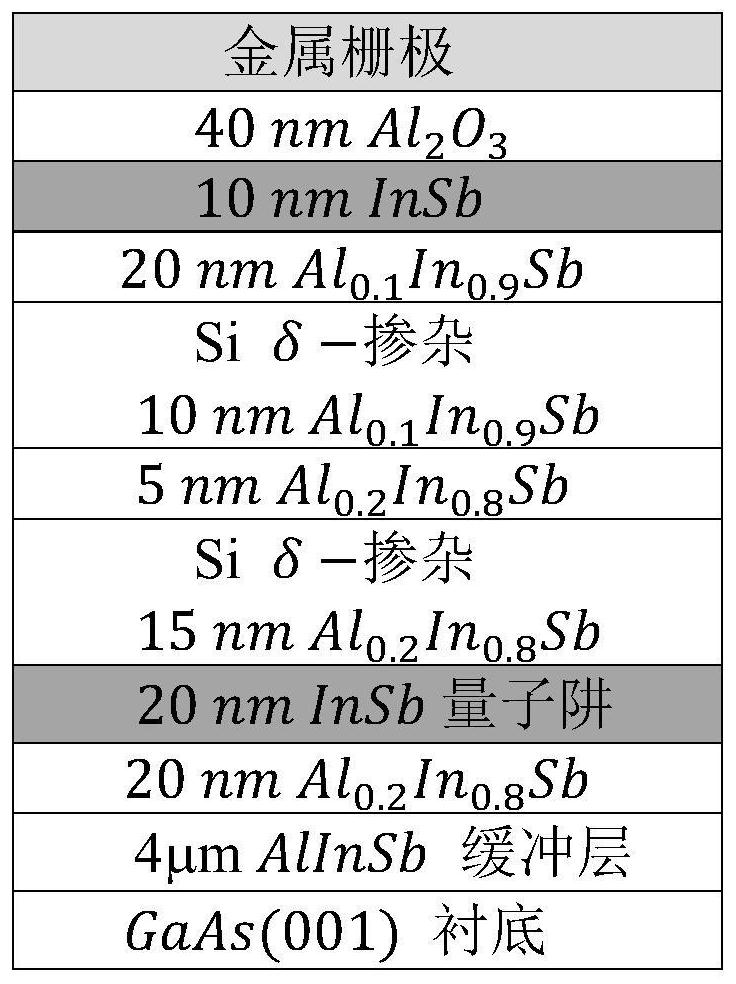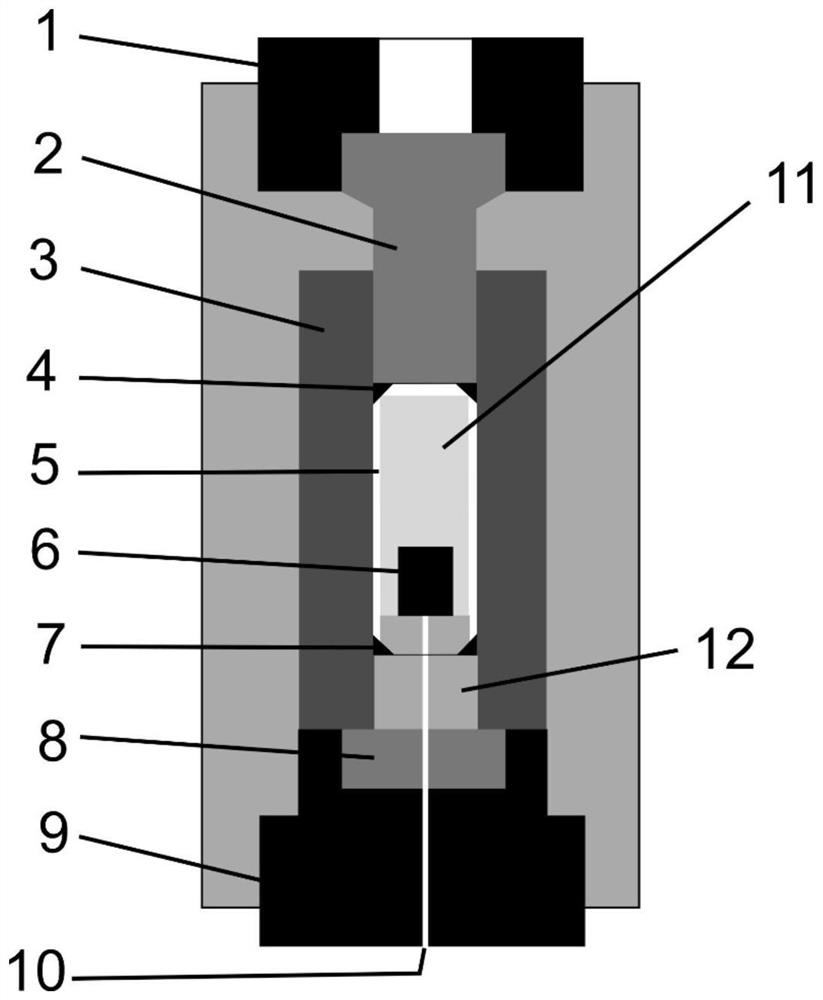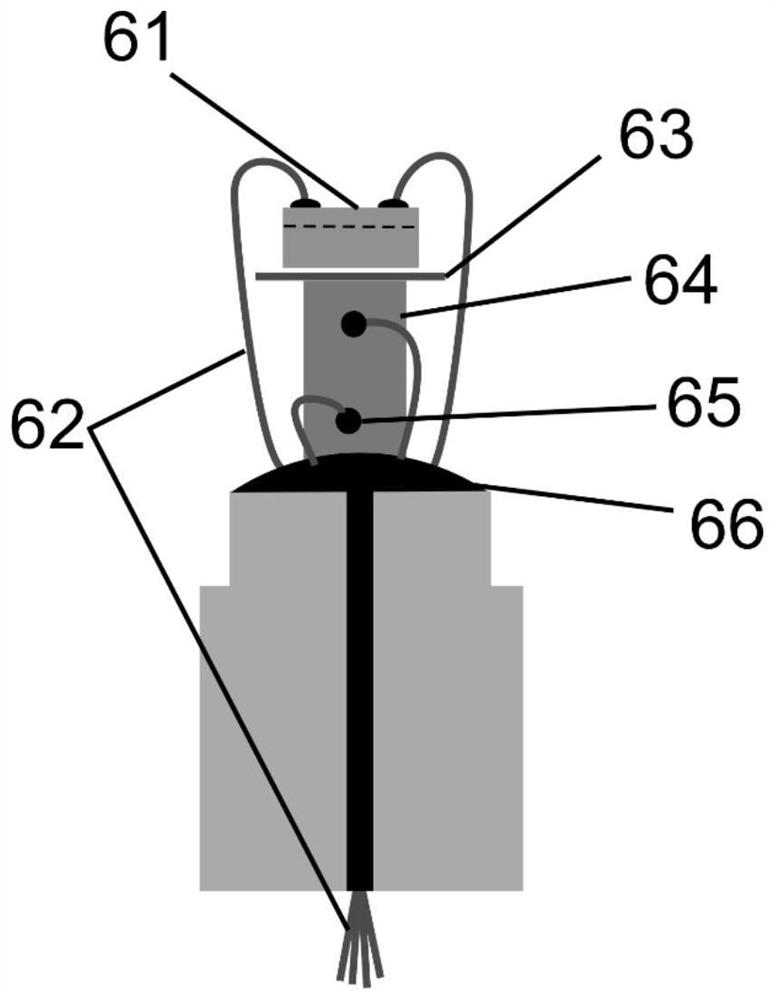A method for independently adjusting the spin-orbit coupling parameters of semiconductor quantum wells
A technology of spin-orbit coupling and quantum wells, which is applied in semiconductor devices, single semiconductor device testing, electrical measurement, etc., can solve problems such as difficult and impossible independent control of spin-orbit coupling parameters, unfavorable quantitative analysis, etc.
- Summary
- Abstract
- Description
- Claims
- Application Information
AI Technical Summary
Problems solved by technology
Method used
Image
Examples
Embodiment 1
[0026] Embodiment 1 Overall process of the present invention
[0027] The overall technical solution of the present invention will be specifically described below in conjunction with the accompanying drawings. The invention is a method for independently regulating the Rashba and Dresselhaus spin-orbit coupling strength parameters of semiconductor quantum wells. By changing the pressure and gate voltage of the sample at the same time, the independent regulation of the InSb quantum well Rashba and Dresselhaus spin-orbit coupling strength parameters α and γ can be realized, specifically including the following steps,
[0028] Step S1: Select a semiconductor quantum well sample with asymmetric doping and a controllable metal gate;
[0029] Step S2: Put the sample in the step S1 into the piston-sleeve type electrical measurement high-pressure chamber, and apply pressure and grid voltage to the sample;
[0030] Step S3: The Rashba and Dresselhaus spin-orbit coupling parameters are...
Embodiment 2
[0031] The concrete implementation of embodiment 2 step S1
[0032] The sample selected in step S1 is an InSb quantum well, and its layered structure schematic diagram is as follows figure 1 As shown, from bottom to top is (001) plane semi-insulating GaAs substrate, 4 micron (μm) Al 0.1 In 0.9 Sb and Al 0.2 In 0.8 Alternately grown buffer layers of Sb, 20 nanometers (nm) of Al 0.2 In 0.8 Sb barrier layer, 20nm InSb quantum well, 15nm Al 0.2 In 0.8 Sb barrier layer, Siδ-doped, 5nm Al 0.2 In 0.8 Sb barrier layer, 10nm Al 0.1 In 0.9 Sb barrier layer, Siδ-doped, 20nm Al 0.1 In 0.9 Sb barrier layer, 10nm InSb surface layer, 40nm Al2O3 insulating layer, metal gate. Step S1 specifically includes the following steps:
[0033] Step S11: grow an InSb quantum well sample on the (001) plane GaAs substrate by molecular beam epitaxy, the growth process of the sample is as follows: first grow a 4 μm thick Al on the GaAs substrate 0.1 In 0.9 Sb and Al 0.2 In 0.8 Sb buffer la...
Embodiment 3
[0036] The specific implementation of embodiment 3 step S2
[0037] The schematic diagram of the structure of the piston-sleeve type electric measuring high pressure chamber used in the step S2 is as follows: figure 2 As shown, 1 is the pressure bolt, 2 is the pressure piston, 3 is the press sleeve, 4 is the upper sealing gasket, 5 is the Teflon pressure chamber, 6 is the quantum well sample and corresponding components, 7 is the lower sealing gasket, 8 9 is a bottom support bolt, 10 is a lead through hole, 11 is a pressure transmission medium, and 12 is a lead through column. Wherein, quantum well samples and corresponding components 6 such as image 3 shown in image 3 Among them, 61 is a semiconductor quantum well device, 62 is a wire, 63 is a sample support plate, 64 is a light-emitting diode, 65 is a conductive silver glue, and 66 is a sealant. Step S2 specifically includes the following steps:
[0038] Step S21: Load the quantum well sample and light-emitting diodes...
PUM
 Login to View More
Login to View More Abstract
Description
Claims
Application Information
 Login to View More
Login to View More - R&D
- Intellectual Property
- Life Sciences
- Materials
- Tech Scout
- Unparalleled Data Quality
- Higher Quality Content
- 60% Fewer Hallucinations
Browse by: Latest US Patents, China's latest patents, Technical Efficacy Thesaurus, Application Domain, Technology Topic, Popular Technical Reports.
© 2025 PatSnap. All rights reserved.Legal|Privacy policy|Modern Slavery Act Transparency Statement|Sitemap|About US| Contact US: help@patsnap.com



